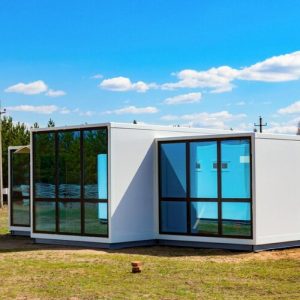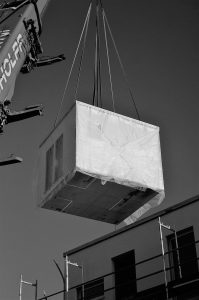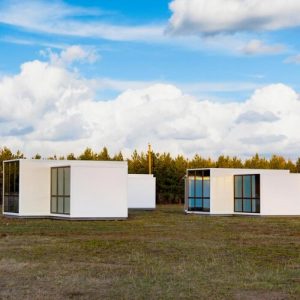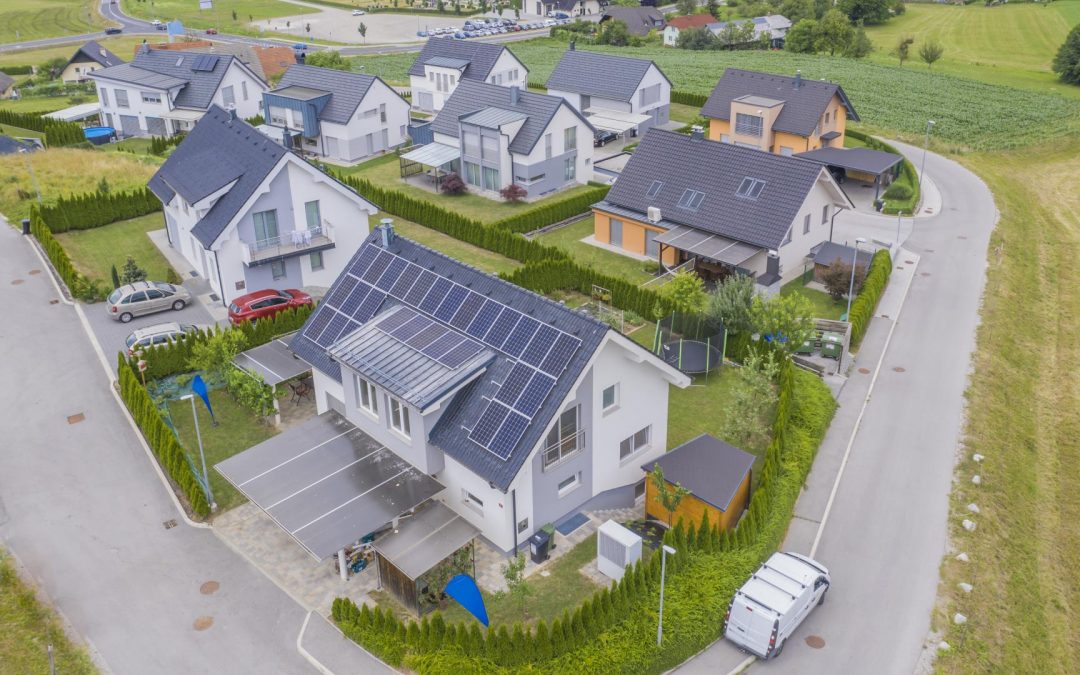There is a strong trend in the real estate industry toward constructing infrastructures away from the construction site — modular construction services. Modular construction in Australia is booming, and with the complexity of the pandemic, building houses through modular construction is at an all-time high.
Criss Cross Group will inform you of everything you need to know about modular building construction in Australia. Finish this blog to gain a thorough understanding of why modular building Australia is on the rise.
Modular Construction in Australia: Everything You Need to Know
Modular construction is a type of prefabricated construction in which a large portion of the construction process takes place off-site. It is more accurate to think of it as a manufacturing method rather than a specific product category in and of itself. Prefabricated construction technologies, whether used for large or small modular construction projects, single-story or multi-story, can offer significant advantages over traditional construction methods in a variety of situations.
A factory-built home starts with a series of parts that are built in a climate-controlled environment. Because each building component is designed to fit perfectly with the next, modular construction methods are frequently compared to building with blocks — think Lego blocks.
Modular building configuration, square footage needs, and site layout affect module length. Each module is staged in order to achieve the most efficient final assembly and then erected with cranes on the construction site. The location is being prepared while the manufacturing facility is building modules. Excavation, grading, foundation, and utility work comprise this phase. A great product is produced in a safe and stable work environment. Finally, modular building Australia promotes efficiency, longevity, and quality. A modular home cannot be moved after it is installed and anchored to its foundations. Furthermore, once a modular home has been installed and secured to its foundations, the structure cannot be moved.
A Brief Overview of the Reasons Why Modular Construction’s Sustainability and Durability Would Continuously Boom for the Next 5 Years
Building companies all over the world are creating new types of houses that are economical, environmentally friendly, adaptable, and stylish all at the same time. Future demand indicators suggest that the proportion of new units represented by futuristic dwelling types will continue to rise in the coming years.
Modular construction services are adapting and leveraging new equipment and technology to provide a variety of housing styles that people will require in the future. For this to happen, construction owners, real estate developers, residential developers, contractors, multi-family builders, and building materials manufacturers will all need to change their business models.
As part of Criss Cross Group’s overall strategy, we work to obtain property in desirable locations while also utilizing modern construction and building technology to produce the types of living units that people prefer to live in. We use digital technologies for a variety of tasks and to stay competitive in the market.
Modular Construction in Australia: Sustainability and Durability for the Next 5 Years
The modular building sector is quietly revolutionizing how we live in the coming decades. Sustainability is no longer a trendy concept in Australia; it is a crucial component in home construction. Modular construction approaches may be the key to sustainable development. But why is the public so intrigued by modular methods for environmental sustainability?
 As conventional building costs rise and the requirement for sustainability grows, modular construction’s advantages become more critical in reaching ambitious environmental goals. Modular construction in Australia has the ability to reduce waste and increase resource efficiency. The benefits of modular construction cannot be emphasized. The country has made great progress in terms of environmental sustainability, with significant opportunities for more responsible use of materials and environmentally friendly designs. Aside from obvious safety, site productivity, and cost savings advantages, modular building is also beneficial to the environment. The advantages of prefabricated building begin at the factory and continue on the job site for the whole structure’s existence.
As conventional building costs rise and the requirement for sustainability grows, modular construction’s advantages become more critical in reaching ambitious environmental goals. Modular construction in Australia has the ability to reduce waste and increase resource efficiency. The benefits of modular construction cannot be emphasized. The country has made great progress in terms of environmental sustainability, with significant opportunities for more responsible use of materials and environmentally friendly designs. Aside from obvious safety, site productivity, and cost savings advantages, modular building is also beneficial to the environment. The advantages of prefabricated building begin at the factory and continue on the job site for the whole structure’s existence.
Green, eco-friendly modular homes are no longer a fleeting novelty. It is a method of restoring rather than destroying the environment. Eco-friendly modular homes provide much more than shelter. Start with your own house if you want to help ensure a healthy environment. That is an eco-friendly modular home.
Let’s dig a little deeper into the sustainability of modular construction in Australia.
Eco-friendly
Offsite components are built to exact dimensions, which reduces material waste. The pre-sized design features, as well as the fact that panels cover more vertical square meters on-site, limit the use of bonding and attaching materials, resulting in less waste and packing. Prefabricated construction also saves energy because the controlled environment improves filtration and wall insulation.
Affordable
Prefabricated houses can save money for both the builder and the owner. Because of the variety of designs and features, the overall project cost may be lower than expected.
Flexible
Modular buildings, for example, can be disassembled and relocated with ease. If a resident is happy with the layout and size of their new home, the only costs are the moving service and the labour to construct and connect utilities.
High-Quality
Controlled procedures and quality assurance inspections ensure that strict criteria are met. The use of design software for off-site concrete settings ensures that every component is identical. In contrast to brickwork, where human error is possible at every layer of poured bricks, a prefabricated panel is straight and flat from bottom to top.
Shorter Construction Time
Again, a crane and a small crew on the ground can install the panels faster than brick walls. Larger apartment projects, for example, frequently have the main shell completed before the interior fit-outs, such as utility installation or carpentry.
Before I end this blog, allow me to tell you the benefits and risks of modular construction in Australia. Modular construction in Australia is increasingly becoming popular, and it is no longer limited to small-scale projects. Construction of commercial, multifamily, retail, and industrial buildings has already embraced the modular delivery method as a viable option.
Many factors contribute to the rise of modular construction in Australia, including a more controlled building environment, significant cost savings, and shorter construction timeframes. However, modular construction, like any other project, comes with its own set of challenges that must be overcome. Within the scope of this blog post, we’ll examine the risks and benefits of modular construction in Australia.
Benefits of Modular Construction in Australia
1. Fast fabrication
Since most of the construction takes place off-site, modular construction is substantially faster than traditional construction methods. Construction of the modules can take place concurrently with on-site construction, which reduces construction time by a significant amount. Due to the factory environment and standardization of the construction, contractors can take advantage of automation to substantially reduce construction time and minimize weather delays or on-site modifications that might otherwise cause the project to stall.
2. There is no chance of a weather delay
As a result of constructing the modules in a controlled environment, there is virtually no concern about weather delaying the completion of the modular components. It also gives workers with safer and more comfortable working environments, allowing them to be more productive and deliver higher-quality modules. Furthermore, because the modules are delivered to the job site pre-assembled with flooring, cabinets, counters, plumbing and electrical fittings, and appliances, they require little effort and time to be ready for use after they are unloaded.
 3. More environmentally friendly
3. More environmentally friendly
Creating modules in a factory environment reduces construction site waste by a large amount since it is more controlled, more automated, and more adaptable than doing so on the job site. Construction companies do not have to be concerned about material damage caused by poor air quality or inclement weather. They can even repair or replace units that have been damaged or are no longer in service.
4. Makes working conditions safer for employees
Indoor construction locations are often less hazardous than their traditional, outdoor counterparts—which is good news for construction workers who work in these areas. Workspaces in a production environment can be constructed ergonomically to lessen the amount of wear and tear. The controlled atmosphere results in improved air quality, easier access to tools, better lighting, and other benefits.
5. A cost-effective solution
The cost-effectiveness of modular construction in Australia is one of its most significant advantages. Construction companies that use modular buildings save money on materials and labour because they produce less waste, more efficient in their construction processes, and rely more on automation.
6. It frees up storage space for materials
Another advantage of modular building Australia is the ability to store supplies on-site. When a venue is constrained by area, staging and moving objects around might be difficult to accomplish. This leads to clutter, which slows down work and raises concerns about theft. Construction sites can be kept cleaner and safer by constructing the modules in a factory, while also providing greater space for workers to work and move about freely.
Risks of Modular Construction in Australia
1. Quality control is extremely important
Quality control is essential in any construction project since it helps to ensure the safety of both workers and customers. While the rapid pace of modular projects is advantageous in terms of return on investment, automation and rapid construction can increase the likelihood of construction faults that influence on the quality and safety of the structure.
Companies that participate in this work should have a thorough quality assurance program in place to assure the quality of the process and to detect individual flaws with each component before it is delivered to the job site.
2. Various complex decisions must be made
Modular construction services necessitate the completion of more decisions, design and technical work to be accomplished upfront in the process. For this to work, architects, engineers, and contractors must be familiar with the complexities of the modular fabrication and building stages of the construction process. Different front-loaded design method forces purchasers and owners to make final decisions on items such as house finishes and appliances so that they can be acquired before any construction work begins.
3. Modules Might be Damaged During Transportation
Since companies carry modules after they have been constructed, they are more susceptible to damage while in transit. The module may be damaged by vibrations and stress from the transportation process, causing components to break free, which could have a negative influence on the structural integrity of the building when the module is installed. It’s also important for businesses to evaluate potential transportation concerns. For example, drivers frequently move modules to construction sites on large load trucks, which can be dangerous and probably result in accidents.
4. Installation sometimes requires specialized equipment
Modules will need to be linked and placed on-site, even though the majority of the work is done off-site in the modular construction process. In some cases, specialist equipment, such as cranes and hoists, will be required to complete this installation successfully. The dangers associated with module installation are the same as those associated with traditional construction, including weather delays and site changes. Damage may occur during the installation process if you do not have a skilled crew that is experienced in providing modular construction services. This damage could have an impact on the structural integrity of the building as a whole.
But, wait, there’s more. In a few minutes, I will tell you about the history of modular construction in Australia. Modular homes, also known as prefabricated homes or precision-built homes, are constructed to the same or greater standards as stick-built homes on-site. “Permanent modular construction” is the name given to the construction method.
The phrase “modular” is synonymous with “prefabricated” or “prefabrication.” “Modular buildings and modular homes are prefabricated structures or homes made up of repeating components known as modules”. The term “modular” refers to a construction approach that entails building components away from the construction site and then transporting them to the intended location. On-site assembly of the prefabricated components is completed. Cranes are sometimes used to place prefabricated components. The modules can be stacked, end-to-end, or side-by-side, providing for a wide range of layouts and styles. This has always been one of the main methods of modular construction in Australia since.
HISTORY OF MODULAR CONSTRUCTION IN AUSTRALIA
The earliest recording of modular construction in Australia, specifically in Victoria, Southern New South Wales, and South Australia has been dated 35 years ago. But did you know that modular building construction in Australia has a longer history than you might think?
PREFABRICATION IN AUSTRALIA
Prefabrication was first used in Australia in the early 17th century to create the built environment. This lovely country was found by Europeans. Due to a scarcity of qualified labor and prefabricated structures, Materials and building components were manufactured in the United Kingdom or a few other Asian countries and shipped to the United States.
They were then assembled in Australia. Settlers’ cottages, stately mansions, and other man-made structures were among the manmade structures. Villas, churches, and schools were among the structures that could be ordered using illustrated pattern books and catalogues.
In 1853, 15,960 wooden dwellings and 6,369 iron constructions were brought to Melbourne, according to records.
None of these structures, however, have survived, owing to the metal’s market value.
Corio is a great example of prefabricated buildings from the ancient era in Australia. As seen in Figures 1 and 2, the villa is located in Geelong. The most important structural elements were. Between 1854 and 1855, it was made in Edinburgh, Scotland, and then erected in Geelong, Australia. and the year 1856. Corio Villa is made of prefabricated cast iron and was delivered to Geelong in boxes. 1855. Corio Villa is the first cast iron property and the sole example of this type of prefabricated structure. Since the factory burned down shortly after Corio Villa was built, it is the only model in the world.
Due to a period of great upheaval in recent centuries, modular building Australia were in high demand. Infrastructural initiatives, as well as the baby boomer generation’s fast population expansion.
1600’S …
In the 1600s, a fisherman from England wanted to bring his home over the Atlantic to America, and one of the first modular homes was built. The idea was to dismantle his home into transportable components and transfer them onto a boat, where they would be reassembled once they arrived. However, it took some time for the concept to fully take off after that. The modular building approach didn’t fully take shape until the great American gold rush, when people moved to rural areas in search of their fortune.
1800’S …
As mining communities thrived and prospered, new, faster construction methods were required to accommodate the inflow of people. Preassembled homes were produced in parts in vast factories in larger cities like New York, then moved across the country to more rural locations before being patched back together. This helped tiny towns to expand by allowing dwellings to be built on-site considerably faster than with traditional methods. However, the idea of modular dwellings as we know them today did not become a reality until 1897.
The E.F Hodgson firm is largely credited with introducing modular construction services to the general public; to capitalize on America’s booming population, they created a catalog of modular homes that could be shipped throughout the country. Other residential building companies Sydney immediately followed suit, and modular planning design and construction grew in popularity. Over the next few years, modular construction techniques became more common in many small communities.

20th CENTURY …
The automobile industry provided the final piece of the puzzle that allowed the modular home building services business to truly take off. In 1913, Henry Ford invented the production line, making the construction of modular dwellings much simpler and more efficient. As the number of production lines increased, so did the potential to build more modular homes.
After World War II, a housing crisis arose in Australia, with many troops returning home and beginning families, and modular construction in Australia provided quick, affordable homes wherever you were. People began to use modular building techniques for commercial buildings as the speed and cost efficiency of modular building techniques became apparent, with schools and workplaces employing modular to extend their current facilities.
Consumers desired more modern looking designs by the 1960s, as businesses and people grew all around the world, and the changeable nature of modular allowed them to achieve exactly the style they wanted. Many new uses and designs arose as a result of developments in technology, design, and available materials by the end of the twentieth century and custom home builders became one of the new in demand profession during that time.
21st CENTURY …
Technology has advanced at an astonishing rate since the beginning of the century. Modular construction in Australia have exploded as a result of this, as well as innovative design techniques and materials. Modular construction companies Australia was able to grow and expand and eventually has now the capacity to transport homes over long distances that has aided in the popularity of modular building in nations such as Australia, where rural towns were booming and views about lifestyle were shifting.
Modular construction in Australia provided the ability to customize every aspect of your home, from floor plans to design, as well as the ability of modern technology to create almost endless styles of build, has made modular building a hugely accessible option. Whether you are looking for a vacation home, to downsize, have more room for your growing family, or to relocate to the country, there is almost nothing we can’t do!
Criss Cross Group: Your Trusted Modular Construction in Australia
Modular construction could be the first step toward a more equitable residential solution. Can you imagine the impact of high-quality buildings that can be demolished, relocated, and easily refreshed in a neighbourhood desperate for affordable housing?
What are you waiting for? Modular construction in Australia has the potential to make a difference in people’s lives. Send us a message right now and we’ll be happy to talk about your next project!
Get a quote for our modular construction services by filling out the form below:


Recent Comments